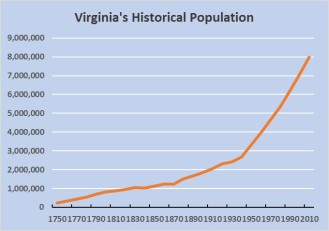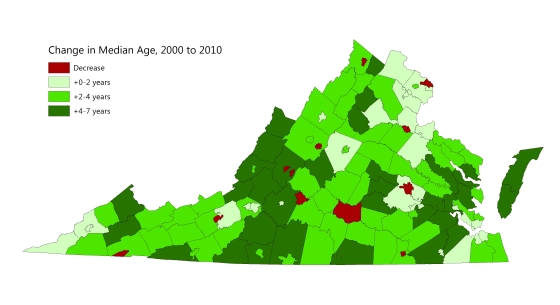If you grew up in one of Northern  Virginia’s suburban counties, such as Prince William, or in any of Virginia’s metro areas, you likely grew up with the impression that growth is as certain as the seasons. For decades, many counties in Virginia have grown relentlessly, constructing thousands of homes each year to house new residents. With more residents come more schools, roads, offices and shops. Except for the hard times around the Civil War, Virginia’s population as a whole has grown continuously since it was a colony.
Virginia’s suburban counties, such as Prince William, or in any of Virginia’s metro areas, you likely grew up with the impression that growth is as certain as the seasons. For decades, many counties in Virginia have grown relentlessly, constructing thousands of homes each year to house new residents. With more residents come more schools, roads, offices and shops. Except for the hard times around the Civil War, Virginia’s population as a whole has grown continuously since it was a colony.
But outside Virginia’s largest urban areas, population growth is not a fact of life. In 2013, the population of most of Virginia’s counties and cities had declined from when it peaked in the past.



